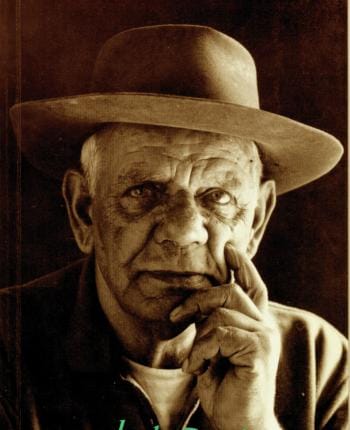No Sugar for you!

At least, if you lived in 1930s Australia – and as an Indigenous person. But I would argue that there is still 'no sugar' for many Indigenous Australians today.
Welcome to Part 1 of the No Sugar 🍭 series, wherein we'll explore how the post-colonial 🥷 ideas Davis explored in the play have only become increasingly pertinent in modern Australia 🦘.
Bertolt Brecht argued, "theatre is not a mirror for reality, but a hammer with which to shape it." No Sugar (1985) captures the transformative power of theatre which this moving quote expresses. Written by Jack Davis and set during the Protection Era in Western Australia, the play focuses on the Indigenous Millimurra family and their attempts at subsistence to highlight the historical injustices (and triumphs) of Indigenous Australians. Through various dramatic features, Davis exposes the mistreatment of Indigenous Australians by White society in the 1930s, celebrates the resilience of Indigenous peoples to survive brutality, and calls us to acknowledge Indigenous voices in our contemporary society. No Sugar's representation of Indigenous issues in 1930s Australia still resonates strongly with today.
Exposing mistreatment
The visual dramatic feature of a split scene immerses me into the setting of 1930s Australia, where Indigenous peoples were isolated and mistreated by White society.
The split scene separates, and in this way juxtaposes, the Indigenous with the British cosm. In the Indigenous sphere, Gran and Milly complain about how their ever-smaller rations make it harder for them to exercise proper nutrition and hygiene. In dialogue, they lament, “Wetala cut all the trees down” and “soap is no longer included as a ration item.” Contrastingly, in the British sphere, while Beville also complains, it is instead about how his workers make it harder for him to exercise proper assimilation. In his soliloquy, he snidely comments, “I was a little concerned to see so many dirty little noses amongst the children”. This parallelism and split scene has the effect of scorning the officiousness and callousness of Neville’s regime towards Indigenous Australians in the 1930s.
It is also important to note that the stage directions describe this staging as a “dispersed setting on an open stage” that separates the stage into “White” settings on one side of the stage, with “the aboriginal scene" “on the other side”. This multi-layering and shifting of perspectives as a result requires us to continuously shift our focus – we are forced to not be passive recipients, but active participants, in the unfolding drama.
It is as if we join hands with the Indigenous characters in their fight to resist White establishment and pejorative labels of “blithering stone age idiots” and “incompetent savages”. Through visual staging devices, Davis condemns the mistreatment of Indigenous Australians by White officials in the 1930s. Importantly, we are made not only to learn, but feel, these historical Indigenous injustices.
Wanna hear more about No Sugar? Subscribe to get updates! It's free, and I would love to hear your thoughts as well. 🤗 🤗
